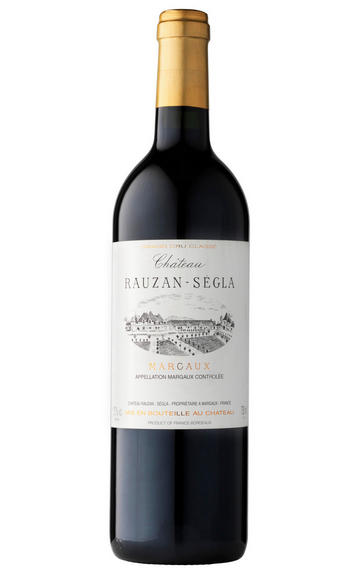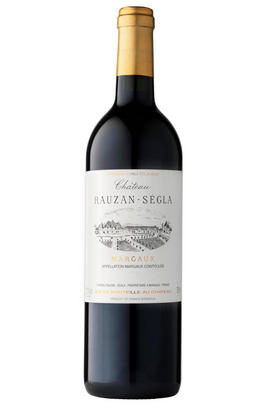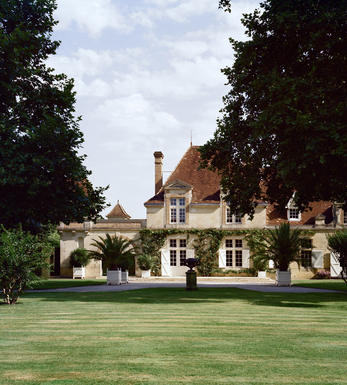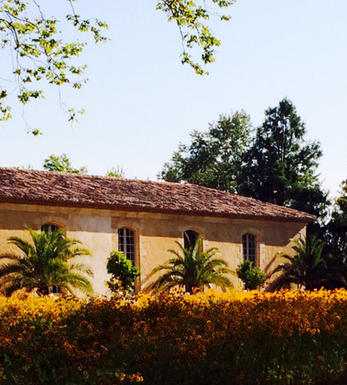
2012 Château Rauzan-Ségla, Margaux, Bordeaux

Critics reviews
Robert M. Parker, Jr. - 30/04/2015
Jancis Robinson MW, jancisrobinson.com, April 22 2013
James Molesworth, Wine Spectator, April 8 2013
Robert Parker - Wine Advocate #206 - Apr 2013
About this WINE

Chateau Rauzan-Segla
Château Rauzan-Ségla and Mouton Rothschild were considered the leading 2emé Cru Classé Bordeaux properties during the 19th century. However, while the fortunes of Mouton prospered in the 20th century, culminating in its elevation to 1er Cru status in 1973, Rauzan-Ségla`s reputation dwindled and a succession of disappointing wines were produced.
In the early 80s the Rauzan-Segla was sold and the renaissance began. The eminent Professor Peynaud was appointed as a consultant and the proportion of Cabernet Sauvignon in the blend was increased, as was the proportion of new oak used in the maturation process. In 1986, a brand-new cuverie was built.
A succession of eye-catching wines were produced at Rauzan-Ségla in the mid to late 80s and early 1990s. Rauzan-Segla was bought by Chanel in 1994.
There are now 45 hectares of vineyards at Rauzan-Ségla and the grapes (63% Cabernet Sauvignon, 35% Merlot, 2% Cabernet Franc) are fermented in temperature-controlled, stainless steel tanks. The wine is then matured in barriques (60% new) for 18 months.

Margaux
If Pauillac can be seen as the bastion of ‘traditional’ Red Bordeaux, then Margaux represents its other facet in producing wines that are among Bordeaux’s most sensual and alluring. It is the largest commune in the Médoc, encompassing the communes of Cantenac, Soussans, Arsac and Labaude, in addition to Margaux itself. Located in the centre of the Haut-Médoc, Margaux is the closest of the important communes to the city of Bordeaux.
The soils in Margaux are the lightest and most gravelly of the Médoc, with some also containing a high percentage of sand. Vineyards located in Cantenac and Margaux make up the core of the appelation with the best vineyard sites being located on well-drained slopes, whose lighter soils give Margaux its deft touch and silky perfumes. Further away from the water, there is a greater clay content and the wines are less dramatically perfumed.
Margaux is the most diffuse of all the Médoc appelations with a reputation for scaling the heights with irreproachable wines such as Ch. Margaux and Ch. Palmer, but also plumbing the depths, with too many other châteaux not fulfilling their potential. There has been an upward shift in recent years, but the appellation cannot yet boast the reliability of St Julien. However, the finest Margaux are exquisitely perfumed and models of refinement and subtlety which have few parallels in Bordeaux.
Recommended Châteaux: Ch. Margaux, Ch. Palmer, Ch. Brane-Cantenac, Ch. Rauzan-Ségla , Ch. Dufort-Vivens, Ch. Ferrière, Ch. du Tertre, Ch. Giscours, Ch. d'Angludet.

Cabernet Sauvignon Blend
Cabernet Sauvignon lends itself particularly well in blends with Merlot. This is actually the archetypal Bordeaux blend, though in different proportions in the sub-regions and sometimes topped up with Cabernet Franc, Malbec, and Petit Verdot.
In the Médoc and Graves the percentage of Cabernet Sauvignon in the blend can range from 95% (Mouton-Rothschild) to as low as 40%. It is particularly suited to the dry, warm, free- draining, gravel-rich soils and is responsible for the redolent cassis characteristics as well as the depth of colour, tannic structure and pronounced acidity of Médoc wines. However 100% Cabernet Sauvignon wines can be slightly hollow-tasting in the middle palate and Merlot with its generous, fleshy fruit flavours acts as a perfect foil by filling in this cavity.
In St-Emilion and Pomerol, the blends are Merlot dominated as Cabernet Sauvignon can struggle to ripen there - when it is included, it adds structure and body to the wine. Sassicaia is the most famous Bordeaux blend in Italy and has spawned many imitations, whereby the blend is now firmly established in the New World and particularly in California and Australia.


Buying options
Add to wishlist
Description
John Kolassa has priced his wine extremely competitively this year with the opening price representing a 34% reduction on the 2011 vintage, which was released at £315.00. As such, this offers excellent value in 2012.
Just below Ch. Margaux and Ch. Palmer in the Margaux pecking order, big John Kolassa, director of this historic estate, has done a sterling job in 2012. This is a jazzy little number. An exuberant and open knit nose with redcurrant fruit and a racy floral edge combines with sappy cassis fruit and more redcurrant notes on the palate. There is a lovely spice and creamy edge from the oak with enough flesh, roundness of fruit, balance and texture to suggest this will turn out very well in bottle. The 2012 Rauzan-Ségla is all about elegance.
Hong Kong Fine Wine Team
wine at a glance
Delivery and quality guarantee